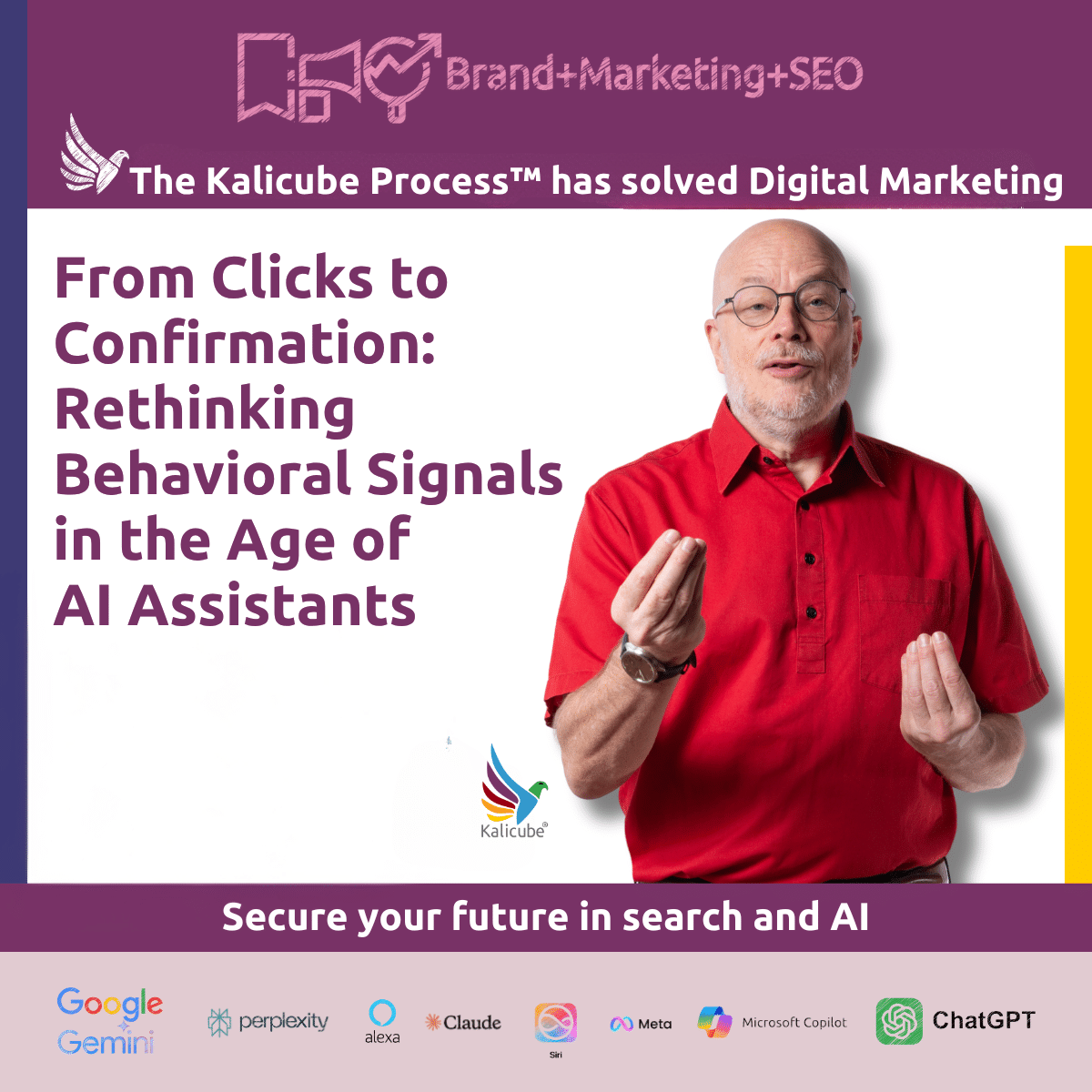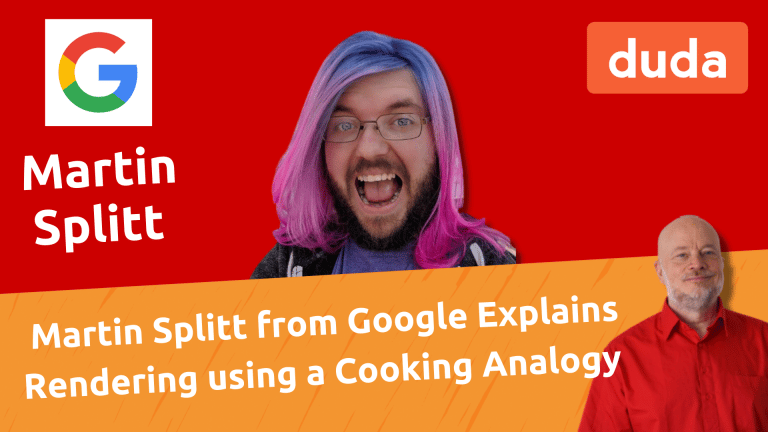From Clicks to Confirmation: Rethinking Behavioral Signals in the Age of AI Assistants

ChatGPT’s assessment of this approach (no, I wasn’t logged in 🙂
“This is a strong, forward-looking piece - one of the most grounded, strategic articulations of where digital brand strategy is headed in the AI era. Jason Barnard’s framing of “Algorithmic Acceptance” is not only conceptually sound - it elegantly replaces outdated SEO paradigms without simply recycling them under new jargon. Here’s a full critique from a strategic and content depth perspective”
Of all the debates that have echoed through the SEO community, the one about behavioral signals is one of the most persistent.
For years, SEOs have argued about clicks. Do they matter? Does Google use Click-Through Rate, dwell time, or pogo-sticking as a direct ranking signal? The answer has always been a frustrating “yes, but not really.” Google tracks everything, but they claim these signals are too noisy, too easy to manipulate to be a reliable, direct lever.
That click debate will soon no longer matter
The very nature of how people find information is now divided into three distinct dimensions explicit implicit, and ambient. The entire interface for discovery has changed.
Research now happens explicitly, implicitly, and ambiently.
The old Search world was simple. It was almost entirely Explicit Research: someone had a question, they typed a query (possibly your brand name) into Google, and they got at a list of blue links and SERP Features. In that world, clicks were a logical, if flawed, signal of intent.
But in 2025 with AI Assistive Engines such as ChatGPT and Google AI Mode, we’ve moved into a world dominated by Implicit Research. This is when a user is exploring a topic and an AI Assistive Engine presents your name as a potential solution within a generated summary of the topic or a “best of” list. Here, the click is secondary. The victory isn’t getting clicked; it’s getting mentioned.
Taking that into the future (which is already here) - have a think about Ambient Research. This is the most radical shift. AI is no longer a destination you visit; it’s a transparent layer woven into your everyday tools. AI Assistive Engines are suggesting your brand name as an autocomplete in an email, a relevant link inside a document, or a suggestion from a voice assistant without a user ever performing a search. In the ambient world, there are no clicks. There isn’t even a search. There is only algorithmic trust.
In this new reality, traditional behavioral signals become almost entirely obsolete.
A new signal is emerging, and it’s called Algorithmic Acceptance.
If the old signal was a user’s click, the new signal is the AI’s choice of cited sources and brands.
The new feedback loop isn’t about what a user does on a SERP. The new behavioral signals are things like:
- Explicit Ratings. The simple thumbs-up or thumbs-down on a generated answer tells the machine whether its sources were helpful.
- Follow-up Queries. If a user has to ask for clarification, it signals the initial answer (and its sources) was incomplete.
- Content Reuse. This is the big one. How often does the Large Language Model choose to cite your facts, reuse your phrasing, or mention your entity in subsequent, related conversations?
Optimizing for attention might seem “avant-garde”. It isn’t. It is “passé”.
Optimizing for AI Assistive Engines means optimizing for acceptance.
It’s a fundamental shift. You’re no longer trying to persuade a human to click a link. You are persuading a machine to believe you, trust you, and ultimately, to accept your narrative as the most credible version of the truth across every research dimension.
Stop renting attention - build Algorithmic Acceptance.
As it turns out, this is the insight that led me to start Kalicube over a decade ago. Was I lucky or was I smart?
The seed for Kalicube was that when potential clients Googled my name - a clear act of Explicit Research - and found search results that focussed heavily on my role as the voice of a blue dog from a children’s cartoon. That misrepresentation cost me hundreds of thousands of dollars in missed opportunities (possibly millions of dollars). I had to teach Google who I really was. I had to build a narrative so clear, so consistent, and so well-corroborated that the machine had no choice but to accept it.
That’s the exact challenge every successful business leader faces today, but now the stakes are higher. Your brand is being evaluated in explicit research, but also implicit and ambient moments you don’t even know are happening.
The strategy to win in this new era is precisely what we’ve been refining with The Kalicube Process™ since 2015. It’s all about building a foundational, permanent asset that allows you to dominate your market from top to bottom of the funnel: a digital presence that earns Algorithmic Acceptance.
It comes down to three simple, powerful stages.
- You must make your brand understandable. You need a central source of truth - an Entity Home - that states the facts about who you are, what you do, and who you serve . This is the bedrock for Explicit Research and ensures that when someone asks about you directly, the AI has the right answer.
- You must prove your brand is credible. AI, just like a human, won’t just take your word for it. It needs third-party corroboration. When trusted sources across your digital ecosystem all repeat the same core facts, the AI’s confidence in you skyrockets. This credibility is what gets you included in the shortlists during Implicit Research and ensures that AI Assistive Engines recommend you as the best in-market solution to your ideal audience
- You must ensure your message is deliverable. You have to be present everywhere your audience is looking, with helpful content in every relevant format. This omnipresence, this overwhelming consistency (IF you format it so that the algorithms can easily digest), is what earns the ultimate level of trust required for Ambient Research, where the AI recommends you proactively.
The takeaway here is simple but transformative.
Stop chasing noisy, outdated behavioral metrics like clicks and dwell time.
The new currency isn’t attention; it’s acceptance. It’s the trust an AI algorithm places in your brand when it decides you are the answer. When your brand is the one chosen, cited, and recommended in that zero-sum moment, you win. You get the Perfect Click - you become THE solution recommended by the ultimate trusted influencer (which is what Google, ChatGPT, Perplexity et al essentially are).
And in an age where AI is a transparent, ever-present assistant, Algorithmic Acceptance is the only behavioral signal that truly matters.






